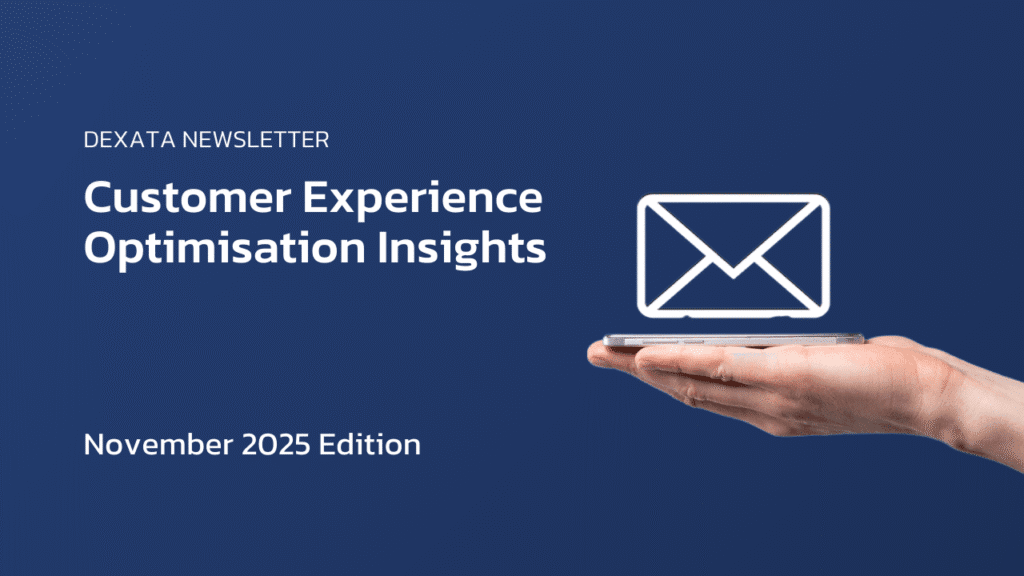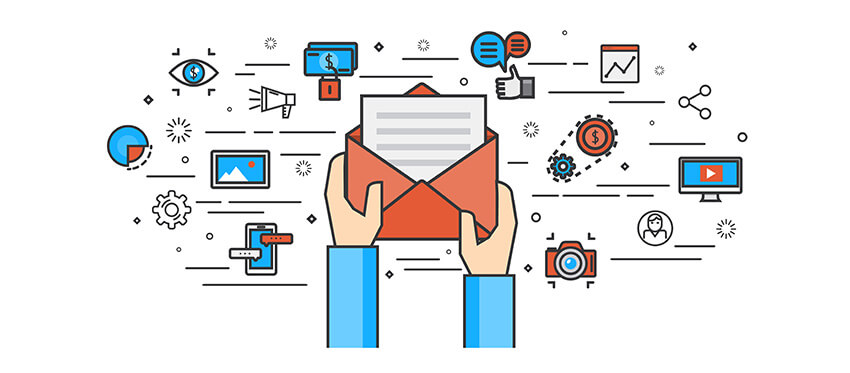
The first page a customer sees isn’t just a gateway – it’s a defining experience. With shrinking attention spans and countless alternatives only a click away, personalising that first page has become crucial for brands and businesses. Research from Nielsen Norman Group shows that 57% of users never scroll past the first screen. This means businesses have just seconds to make an impression that feels relevant and valuable. For a closer look at one of the key questions shaping effective personalisation, read our article “WHEN – Q4 of 6 Key Questions to Unlock Personalisation”.
Often, with data and processes isolated in silos, activating real time customer behavioural data for first page visit becomes a cumbersome task. The real challenge is turning this raw, fragmented data into meaningful signals that can shape a customer’s very first interaction with a brand. This article explores how we used Tealium Moments API and Adobe Target to overcome this and achieve First Page Personalisation.
Why First Page Personalisation matters?
Implementing first-page personalization yields several key benefits – tap on each card to learn more.

Immediate Engagement

Relevance builds trust

Increased conversions

Competitive advantage
First Page Personalisation in Action: Pixers Case Study
Pixers, an interior personalisation business, shows how first-page personalisation can drive engagement and conversions. Since their products are tailored to individual tastes, they created landing pages designed specifically for different customer segments.
B2B visitors, such as business owners and HR decision-makers, saw pages with clean, professional designs and copy highlighting practical benefits. B2C audiences, like cat lovers, were greeted with playful visuals and messaging focused on lifestyle benefits.
B2B Landing Page
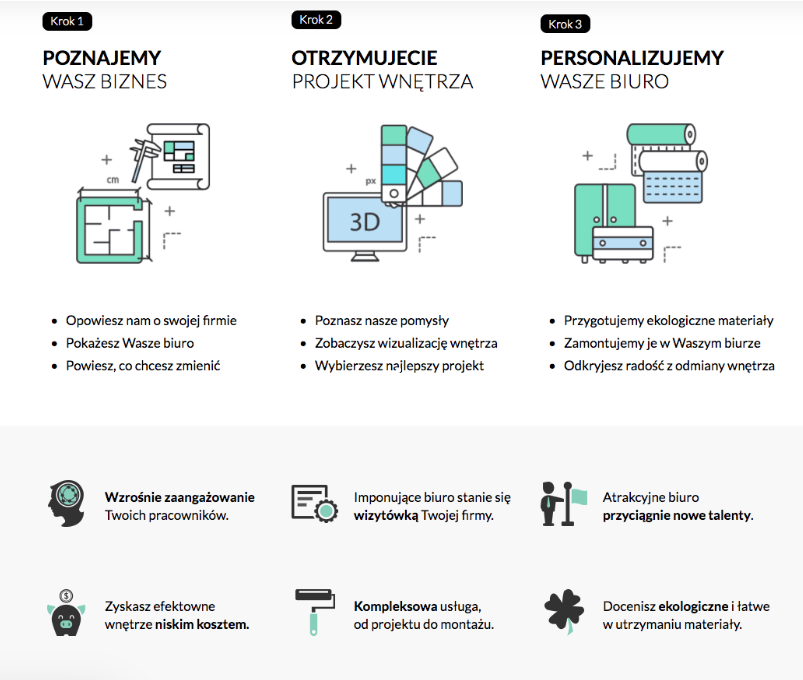
B2C Landing Page
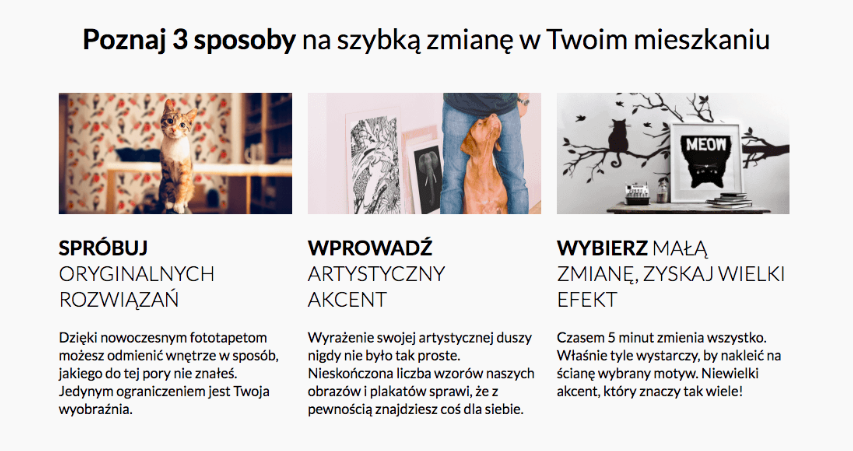
Results:
✅ 15% conversion for B2C customers
✅ 5% conversion for B2B customers
These results, achieved even without lead magnets, highlight the power of segment-focused first-page personalisation to deliver high-quality leads.
Use Case Motivation
Several factors drive the adoption of this use case, as outlined below:
The recency effect is a powerful cognitive bias where individuals are more likely to remember and act on the most recent information they’ve seen. By prominently featuring the product a user viewed most recently, you directly influence their decision-making process, making the next step—adding the item to their cart or learning more—feel natural and effortless.
In today’s “attention economy”, every brand is competing for a finite resource: the user’s focus. The popular idea that the average human attention span has dropped to just 8 seconds—shorter than a goldfish’s—highlights a crucial reality. With so much content available, users have become ruthless curators, deciding in mere seconds whether to stay or leave a page. Real time personalisation cuts through the noise and makes those precious seconds count, ensuring the first screen delivers immediate and undeniable value.
A high bounce rate is a clear signal that something isn’t working—it means a visitor landed on your site and immediately left without taking any action. With industry benchmarks showing that as many as 40-60% of users bounce after just one page, a massive number of potential customers are lost from the very first interaction. First page personalisation addresses this by immediately providing a relevant and engaging experience, making it far less likely that a visitor will hit the “back” button and much more likely that they will explore further.
Use Case Demo (Customer Journey):
Use Case Configuration
A high level data flow diagram for the use case is shown below.
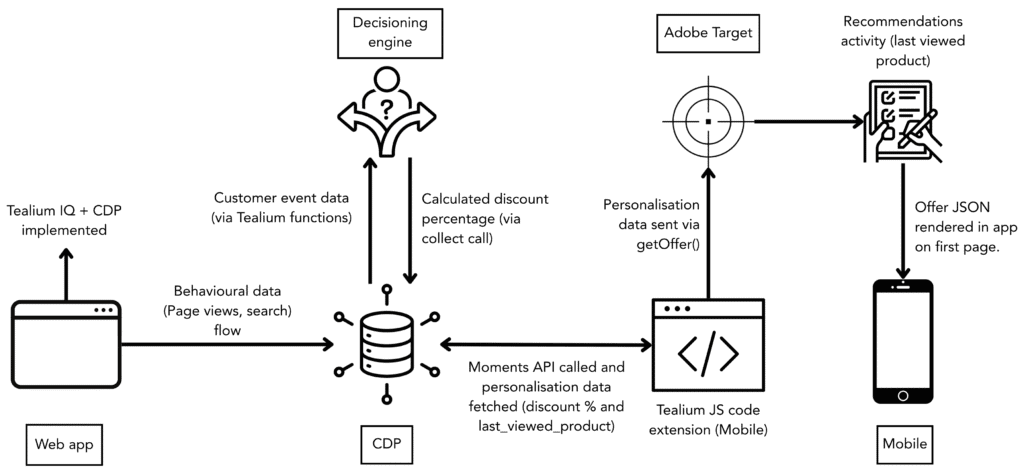
The overall architecture of the use case can be divided into 3 major parts.
1. Behavioural Data Flow
Firstly, we need to ensure that all relevant user behavioural data is passed downstream from our web/mobile applications.
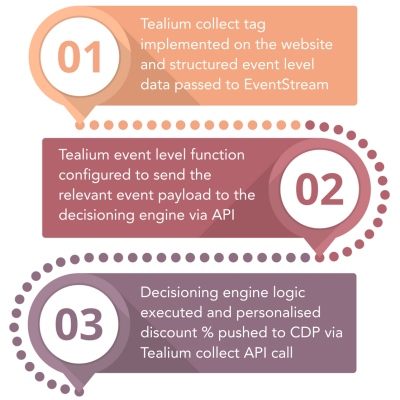
For instance, if a logged-in customer searches for ‘quit,’ the search event—along with the query term—is sent to the event stream. From there, it is passed to the decisioning engine via Tealium Functions, which applies custom business logic and pushes a discount update event back into Tealium containing the customer’s email and a 40% discount.
2. Custom Decisioning Engine
The setup involves a custom decisioning engine that calculates and pushes discount percentages for each customer based on behavioral cues and CRM data. For this use case, the engine is implemented using Google Sheets and Google Apps Script, demonstrating how decisioning logic can be decoupled from data collection. This decoupling allows businesses to later integrate more advanced decisioning solutions, such as enterprise platforms like Pega or AI/ML-based models, without overhauling the underlying architecture. As a result, personalisation can evolve from simple rule-based offers to sophisticated predictive recommendations, supporting scalable, data-driven customer experiences as traffic and business needs grow.
ℹ️ To leverage Tealium’s visitor stitching capabilities and send enriched visitor data to the decisioning engine, you can create custom audiences and trigger an audience level function.
3. Personalisation Delivered
To deliver a personalised experience on the first page of the mobile app, we will use a Tealium iQ JavaScript Code Extension in combination with Adobe Target. Here’s a breakdown of how the extension works:
- Personalisation data fetched from Moments API
// check if customer_id exists
if (b.customer_id) {
// build Moments API URL with customer_id
const url = `https://personalization-api...attributeId=5589&attributeValue=${b.customer_id}`;
// fetch profile data from Moments API
fetch(url)
.then(res => res.json())
.then(data => {
// log personalized attribute (e.g., discount %)
console.log("Discount %", data.properties["6346"]);
// pass data to Adobe Target (next step)
})
.catch(err => console.error("M-API error", err)); // handle API errors
}- Adobe Target trackEvent (for sending recommendations entity) and getOffer (for getting the recommendations offer) triggered:
// send Adobe Target tracking event
adobe.target.trackEvent({
mbox: "clicked-cta", // name of mbox
params: {
"entity.id": data.properties["6405"], // product/entity ID
"at_property": "c1a31316-05c5-50be..." // Target property token
}
});
// request personalized offer from Adobe Target
adobe.target.getOffer({
mbox: "mapi-mbox", // offer location
params: {
"profile.discount": data.properties["6346"] // send discount as profile data
},
success: offer => processTargetOffer(offer), // handle successful offer
error: (status, err) => console.error("Target error", err) // handle errors
});- Process the offer JSON with Tealium remote commands:
// process Adobe Target offer response
function processTargetOffer(offer) {
// check if offer exists
if (offer && offer.length) {
console.log("remote offer", offer); // log offer for debugging
// send offer content to Tealium via remote command
utag.link({
tealium_event: "custom", // custom event name
targetdata_mbox: "mapi-mbox", // mbox identifier
targetdata_content: JSON.stringify(offer[0].content) // offer content
}, null, [6]); // send to Tealium tag (UID 6)
}
}
The JSON offer can be handled by the app developers to display a discount banner on the homepage every time a utag.view call is fired.
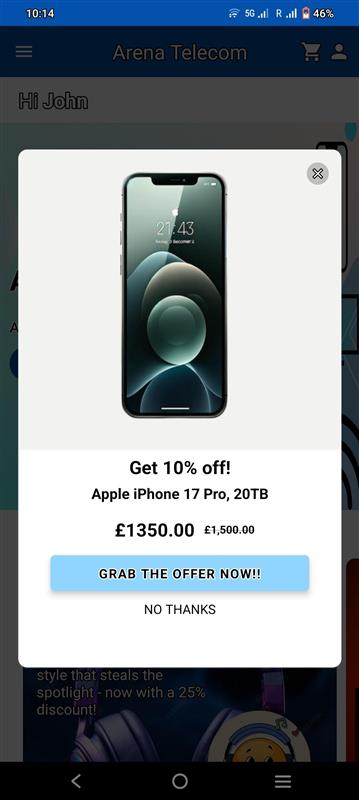
Best Practices
Ensure that Target recommendations only run for those users who are eligible for a discount.
Moments API endpoint response time is typically 60ms so the entire use case ideally runs in real time. If you are using any external APIs, make sure you only use the low latency ones.
Ensure PII like customer email is always hashed.
Always include console logs in extensions/API logic for debugging.
Conclusion
First-page personalisation is no longer a nice-to-have — it’s essential for capturing attention in the first few seconds of a customer journey. In fact, businesses that personalise web experiences see on average a 19% uplift in sales. By combining Tealium Moments API with Adobe Target, businesses can turn raw behavioural data into real-time, relevant experiences that drive engagement. With the right technical foundations and best practices in place, every first impression can be a meaningful one.
Want to learn more about such use cases
Explore Dexata Academy — our free learning platform with practical lessons and real-world use cases.


